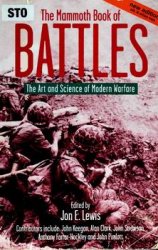An outgrowth of the ‘new’ archaeology or ‘processu-alism,’ behavioral archaeology emerged at the University of Arizona in the early 1970s (see Processual Archaeology). During these years, processual archaeology was approaching its peak popularity, practiced by a coterie of recruits exposed to its tenets in graduate school. However, seeking to carve out niches in the discipline, many young processualists eschewed establishment of a theoretical orthodoxy and went their separate ways. Some employed anthropological theories; others introduced theories from systems engineering, economics, and ecology; and a few drew inspiration from the philosophy of science. As a consequence, various schools of processualism arose and began to feud with each other, initiating a period of great intellectual ferment.
The prospect of an archaeology riven by factions stimulated one of behavioral archaeology’s first contributions. While still a graduate student at Arizona, J. Jefferson Reid delineated a common ground on which all archaeologists could stand. His proposal consisted of several fundamental tenets. First, archaeology was defined as the discipline that studies ‘‘relationships between human behavior and material culture in all times and all places’’. Second, depending on their training and interests, archaeologists could ask historical (particular, idiographic) or scientific (general, nomothetic) research questions. Thus, archaeology has both historical and scientific components, and the flow of questions and findings among them contributes to the discipline’s integration. Third, four strategies of a behavioral archaeology can be delineated on the basis of the kind of questions being asked (historical or scientific) and the temporal referents of the behavior and material culture being studied (past or present). These four strategies encompassed archaeologies of every variety, new and old, and also hinted at future developments.
In collaboration with Michael B. Schiffer, a fellow graduate student, and William L. Rathje, a young faculty member at Arizona, J. Jefferson Reid fleshed out these ideas and developed their implications for archaeological practice.
The Four Strategies
Strategy 1 is the study of past material culture in order to answer historical questions - descriptive and explanatory - about past human behavior and societies, and encompasses most of prehistoric, historical, classical, and industrial archaeologies. This strategy was expected to remain the core of archaeology, and it has.
In strategy 2, which includes experimental archaeology and ethnoarchaeology (see Experimental Archaeology), one asks scientific questions of present-day material culture in order to craft principles useful for studying past behavior. Since the discipline’s inception, archaeologists have conducted experiments and made observations in living societies, but these activities were sporadic, unsystematic, and did not lead to the cumulative growth of principles. Behavioralists anticipated that as the need for principles became more widely appreciated, strategy 2 would undergo a dramatic expansion. These forecasts have been realized, for archaeologists now perform experiments on a bewildering array of subjects and carry out ethnoarch-aeological research in both traditional and industrial societies. As predicted, both experimental archaeology and ethnoarchaeology, now often undertaken with rigorous research designs that build on previous studies, have generated numerous principles; these mounting scientific products have profoundly affected the understanding of past lifeways, especially those of hunter-gatherer and mid-level societies.
Strategy 3 embodies the long-standing belief that archaeology alone has access to records of long-term behavioral change. Thus, argued processualists such as Fred Plog, the study of past material culture could enable archaeologists to formulate principles for explaining change in past (and present) human behavior and societies. Although Reid and his collaborators expected that strategy 3 would expand rapidly, this has not happened. For the most part, archaeologists continue to borrow artifact-free theory (now called ‘social theory’) from other disciplines rather than create explanatory principles more suitable for engaging the material record of the past.
Finally, the advent of William L. Rathje’s ‘Le Projet du Garbage’ led to the designation of a fourth strategy: the study of modern material culture to address historical questions about modern behavior, especially in industrial societies. Arguing that archaeology uniquely possessed the conceptual tools for handling the artifacts of ongoing societies, behavioralists believed that this strategy would enjoy a rapid florescence. Such research continues to increase and diversify, but slowly. Ironically, several archaeologists who immediately appreciated the possibilities of strategy 4, including Richard Wilk and Daniel Miller, became cultural anthropologists. Rathje’s garbage project remains the paradigmatic example of strategy 4 research.
When published in 1975, the four strategies served a useful purpose, calling attention to decades-long trends in the discipline’s development, discerning emerging research frontiers, and giving impetus to the expansion of experimental and ethnoarchaeo-logical research. However, the scheme was far less successful in achieving its aim of reintegrating the discipline. Indeed, beginning in the mid-1980s, under the impacts of postprocessualism and evolutionism, the discipline continued to fission into warring camps.
Archaeological Inference
Prior to the publication of the four strategies, beha-vioralists had taken issue with the epistemological foundations of processualism, that is, its fundamental assumptions about how archaeologists fashion inferences about past human behavior. Processualists expounded a model of inference that went approximately as follows. Because human behavior is patterned, the archaeological record (a product of human behavior) also must be patterned. Therefore, by applying pattern-discovery statistics to archaeological materials, one can extract statistical patterns that directly reflect past behavioral patterns. The principles enabling processual inference were called ‘correlates’, which codified patterns of human behavior in relation to material culture. Thus, in his classic inference of marital residence patterns at Broken K Pueblo, in east-central Arizona, James N. Hill employed a correlate linking matrilocal residence to the spatial distribution of female-associated stylistic attributes of pottery.
Schiffer and Reid argued that the processual model of inference, though appealing in its simplicity, nonetheless failed to account for processes that intervened between past behaviors of interest and present-day properties of the archaeological record, the latter manifest as formal, quantitative, spatial, and relational (associational) variability. These intervening processes were termed ‘formation processes of the archaeological record’, and encompass cultural phenomena such as trash disposal, burial of the dead, and the loss and abandonment of artifacts, as well as environmental phenomena including animal disturbances, chemical weathering, and fluvial deposition and erosion. Principles of cultural formation processes are called ‘c-transforms’, those of environmental processes ‘«-transforms’. Formation processes themselves were said to be highly patterned, in causes and in consequences, and so could create or modify archaeological patterns. Clearly, argued Schiffer and Reid, an appreciation for the operation and effects of formation processes demonstrated that the syllogism supporting the processual model of inference was defective: archaeological patterns do not directly mirror past behavioral patterns. (Early applications of the formation-process perspective to prehistory can be found in special issues of The Kiva - in 1974 on Grasshopper Ruin (J. Jefferson Reid, editor), and in 1975 on Antelope House (J. T. Rock and D. P. Morris, editors) - and in Schiffer’s 1975 consideration of Dalton settlement patterns in Plains Anthropologist.)
To address the inadequacies of the processual model of inference, behavioralists crafted their own models. A foundation was laid in Schiffer’s 1972 American Antiquity paper, ‘Archaeological context and systemic context’, which stressed the importance of keeping conceptually and analytically distinct the systemic and archaeological contexts of artifacts. In systemic context, an artifact or place is participating in a behavioral system; in archaeological context, the artifact or place is no longer taking part in a behavioral system, having been output to the archaeological record. Conflating these two contexts, as did the processual model, precluded rigorous inferences. This paper emphasized that artifacts have ‘life histories’, which can be coarsely modeled as a series of processes, including procurement, manufacture, maintenance, use, and discard. Three types of refuse were also defined: ‘primary refuse’, discarded in its location of use; ‘secondary refuse’, discarded in nonuse locations; and ‘de facto refuse’, artifacts not discarded, per se, but abandoned along with an activity area.
Upon a life-history foundation, Schiffer presented in Behavioral Archeology (1976) the synthetic model of archaeological inference. The core idea is that of a symmetry between inference and explanation: an inference is a statement about past behavior whose justification also explains particular properties of the archaeological record. In justifying an inference, then, one constructs an argument employing correlates, c-transforms, «-transforms, and stipulations (relevant assumptions) that accounts for the successive transformations that took place during the life histories of the artifacts (and places and ecofacts) serving as evidence. For making fine-grained behavioral inferences, Schiffer also presented a detailed life-history model, the ‘behavioral chain’, which focuses on specific activities instead of general processes.
In 1978 Alan Porter Sullivan III published in Advances in Archaeological Method and Theory a model of inference that divided life histories into ‘trace-production contexts’, those intervals during which traces of particular processes and activities are ‘mapped onto’ artifacts and surfaces. Inferences are constructed by partitioning traces into their respective trace-production contexts. Thus, in inferring the use of a chipped-stone tool on the basis of microflakes, one has to partition out microflakes created by nonuse processes such as abrasion during manufacture, trampling, soil movement, shovel or bag wear, and museum-drawer retouch. The result of this partitioning process is isolation of the set of microflakes that can serve as strong evidence for inferring tool use. The partitioning process of Sullivan’s model is enabled by the synthetic model’s correlates, c-transforms, and n-transforms.
Together, the synthetic model and the trace-production model established the gold standard of archaeological inference. One could no longer ignore formation processes when constructing inferences and accounting for properties of the archaeological record. To assist the building of well-justified inferences, Schiffer published, in 1987, Formation Processes of the Archaeological Record, a compendium of c-transforms and n-transforms that drew on recent findings in experimental archaeology, ethnoarchaeol-ogy, and geoarchaeology. This book also presented detailed case studies of Hohokam chronology and
Broken K ceramics, showing precisely the importance of taking into account formation processes, whether one is dealing with the social inferences of processualists or the chronological inferences of culture-historians.
Behavioral archaeology’s contributions to archaeological inference and to the understanding of formation processes have been widely appreciated. Indeed, many archaeologists working in strategy 1 - operating with behavioral models of inference, incorporating findings from strategy 2, and controlling for formation processes - have greatly expanded our knowledge of past human behavior throughout the world. These innumerable achievements cannot be cataloged in this brief article; rather, the focus is on more recent developments of behavioral method and theory.




 World History
World History









